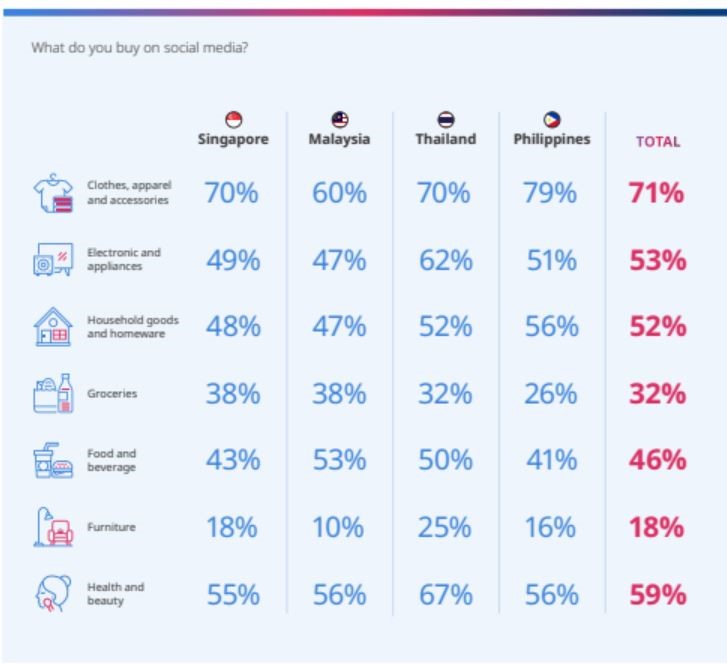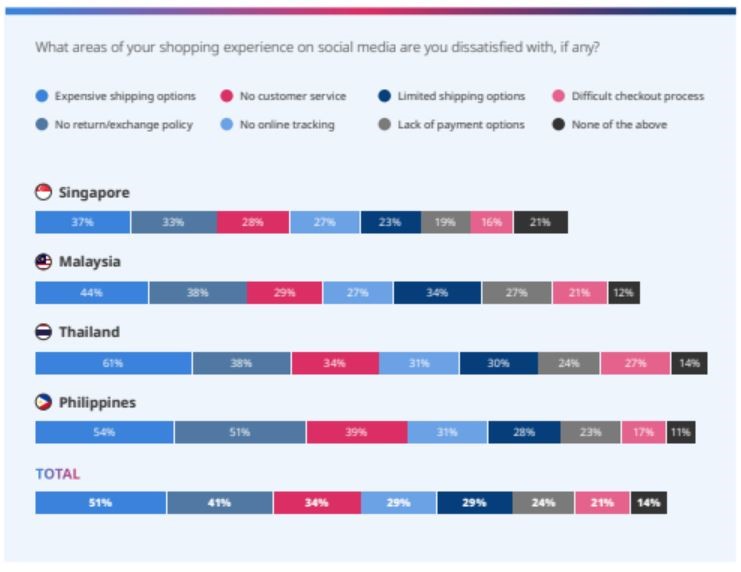The pandemic in the last year has only triggered the rise of social commerce and while lockdown restrictions are easing, social shopping in Southeast Asia is here to stay. Aided with its annual survey, AI solutions firm iKala says it is important for brands to offer top-notch customer experience to make the most of the available opportunities.
Southeast Asia is home to a growing population of avid social media users. With the pandemic, many of them turned to social platforms for their shopping needs as well. As restrictions ease, it has been observed how the growth of social commerce has shown no signs of waning.
In our annual survey, iKala found that social commerce (78%) has overtaken traditional brick-and-mortar (35%) to become the second most preferred shopping channel in Southeast Asia, second only to e-commerce platforms (91%). Orders and gross merchandise value (GMV) nearly doubled in the first half of 2021, as compared to the same period last year.
While opportunities around social commerce are apparent, it isn’t without constraints. Shoppers today have high expectations and poor customer experience can lead them to abandon the shopping journey entirely. In the case of social commerce, expensive shipping costs, lack of or unclear return/exchange policies, and poor customer service are the biggest pain points for consumers in the region. Scams and associated risks only add to consumers being less trusting of social commerce.
Keep pulse of evolving trends and behaviours
Across the region, 42% of consumers use social media to shop at least 1-2 times a month, while another 35% shop on social more than three times a month. In countries like the Philippines and Malaysia, where users spent more time on social media, the tendency to shop was also higher; the countries reported record highs for both orders and GMV.

We also found that social shopping is no longer restricted to categories like clothing, beauty, and electronics. Lockdowns across the region have prompted people to turn to social media for essentials as well, including food and beverage (F&B), and grocery shopping. Retailers who were quick to note and adapt to this shift are already reporting tremendous success. An example is e-grocer HappyFresh, which reported a 10-20x growth in online traffic in Indonesia, Malaysia, and Thailand.

As the landscape continues to evolve, there will be plenty of opportunities in these underpenetrated markets where consumers are eagerly seeking value and convenience. The key to success is to keep an eye out.
Leverage technology for a long-term advantage
For consumers today, any friction or delay in the shopping journey is a big put-off. On social media, shoppers reported expensive shipping (51%), no return or exchange policies (41%), and a lack of customer service (34%) as their biggest concerns. The lack of payment options (24%) is also irksome as preferences vary across countries.

To address these issues, retailers are turning to new and emerging technologies. iKala’s data showed that auto-detection, order management systems, and AI chatbots were the most popular new technologies amongst retailers.
An example of this is the popular Thai handbag brand NaRaYa that already has a strong offline and online presence. In 2020, the company chose to experiment with social commerce. By leveraging influencers in tandem with iKala’s Shoplus Order Management System, NaRaYa saw a 50% increase in purchases from Facebook Live sessions and a 90% increase in efficiency in managing orders. The increase in customer interaction further bolstered NaRaYa’s social media presence, carving out a new social customer segment and reinforcing customer loyalty towards the brand.
More work to be done
There isn’t an easy answer to the challenge around shipping costs – especially since delivery costs have been rising around the world due to COVID-19. To ensure costs aren’t passed on to consumers, retailers should consider widening delivery windows to rationalise the scheduling and routing of deliveries.
Our survey shows that consumers are willing to pay and wait for shipping within reason. Fifty-six percent of consumers are willing to pay less than US$4 per kilogram, and 25% say they’d pay between US$4-10 per kilogram for their orders. Many are also patient about receiving deliveries, with 28% willing to wait a week for their purchases to be delivered. Only 9% expect to receive their purchases in less than three days. Of all the countries surveyed, Thai consumers are the most eager to receive their packages, with 47% expecting deliveries within 3-5 days, and 17% willing to wait less than three days.
How social commerce evolves remains to be seen; what is clear though is that it offers significant long-term potential for businesses willing to leverage it.

